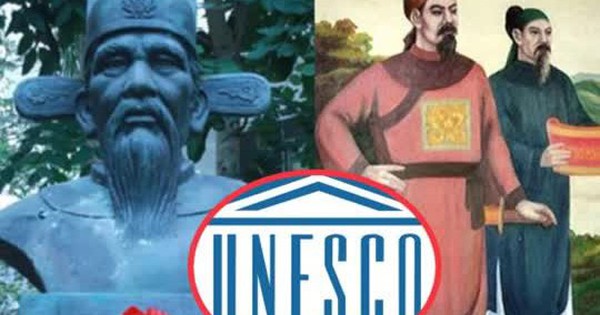As of now, UNESCO (the United Nations Educational, Scientific and Cultural Organization) has honored six remarkable figures from Vietnam as world cultural celebrities. These celebrated individuals include Nguyễn Trãi (recognized in 1980), Hồ Chí Minh (1990), Nguyễn Du (2015), Chu Văn An (2019), Hồ Xuân Hương, and Nguyễn Đình Chiểu (2021).
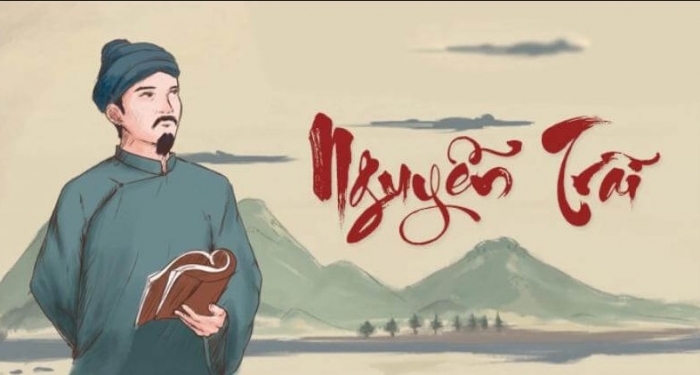
Thus, Nguyễn Trãi is the first Vietnamese talent to be honored by UNESCO as a world cultural figure. On the occasion of the 600th anniversary of his birth in 1980, UNESCO officially recognized him as a world cultural celebrity, an outstanding military leader, and a brilliant politician.
The Ministry of Culture, Sports, and Tourism has also commemorated the 514th, 520th, and 525th anniversaries of Nguyễn Trãi’s death and has issued a stamp set to celebrate the 600th anniversary of his birth. Nguyễn Trãi is also one of the 14 exemplary heroes of the Vietnamese nation.
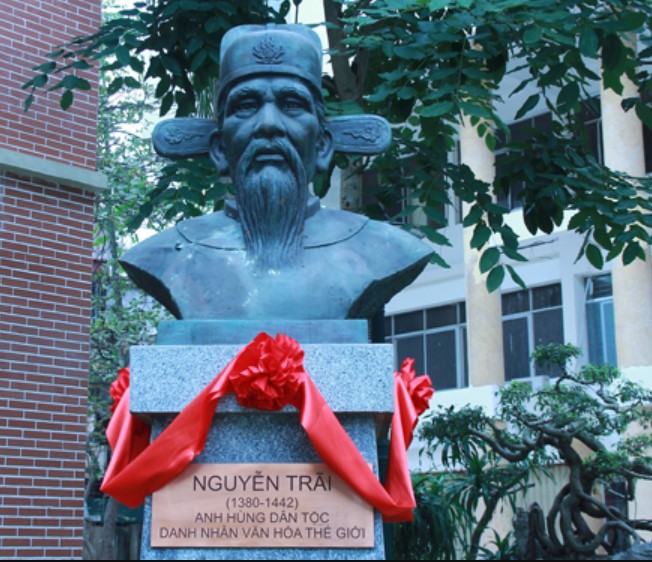
Nguyễn Trãi (1380 – 1442), whose pen name was Ức Trai, was the son of Nguyễn Ứng Long (Nguyễn Phi Khanh), a Confucian scholar, and Trần Thị Thái, the third daughter of the minister Trần Nguyên Đán. He passed the royal examination in 1400 and served as an official under the Hồ dynasty. When the Ming dynasty ruled Vietnam, Nguyễn Trãi joined the Lam Sơn uprising led by Lê Lợi, serving as a strategist for the Lam Sơn troops and drafting diplomatic letters.
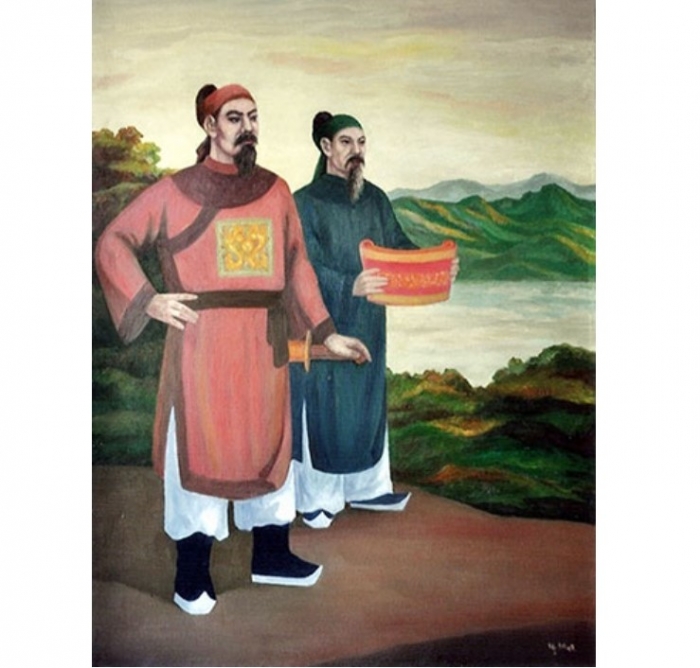
Nguyễn Trãi made significant contributions to the history of Vietnam. He was a heroic figure embodying the essence of the nation, with a deep commitment to his country and its people, as demonstrated through his glorious and valiant efforts in the war against foreign invaders. His talents, intellect, and spirit were dedicated to the nation during the Lam Sơn uprising.
His contributions during his era, as well as to national and global history, are reflected in various aspects.
Nguyễn Trãi is considered a major thinker of Vietnam, with his ideas resulting from the cultural development of the Later Lê period—a crucial milestone in Vietnamese history. His philosophy is a harmonious blend of Confucianism, Buddhism, and Taoism (with Confucianism being the primary influence), integrated with the practical circumstances of Vietnam at that time. His notable thoughts include heroism, patriotism, and compassion for the people.
According to the NATIONAL HISTORY MUSEUM, Nguyễn Trãi made numerous contributions to Vietnamese culture across poetry, literature, history, and geography:
“In the realm of literature, Nguyễn Trãi produced a wealth of literary works in both Classical Chinese and Nôm scripts, showcasing a variety of genres, including literature, history, geography, law, and rituals. However, most of his works were lost during the Lệ Chi Viên case. The remaining works are primarily compiled in the Ức Trai thi tập by Dương Bá Cung, which was printed in 1868 during the Nguyễn dynasty.
His political essays include notable works such as Quân trung từ mệnh tập, a collection of letters written by Nguyễn Trãi on behalf of Lê Thái Tổ to the Ming generals during the Lam Sơn uprising from 1423 to 1427; Bình ngô đại cáo; Bài phú Chí Linh sơn; and other proclamations. His writings are praised for their sharp reasoning, clarity, and emotional depth, exemplifying the art of political writing at its finest.
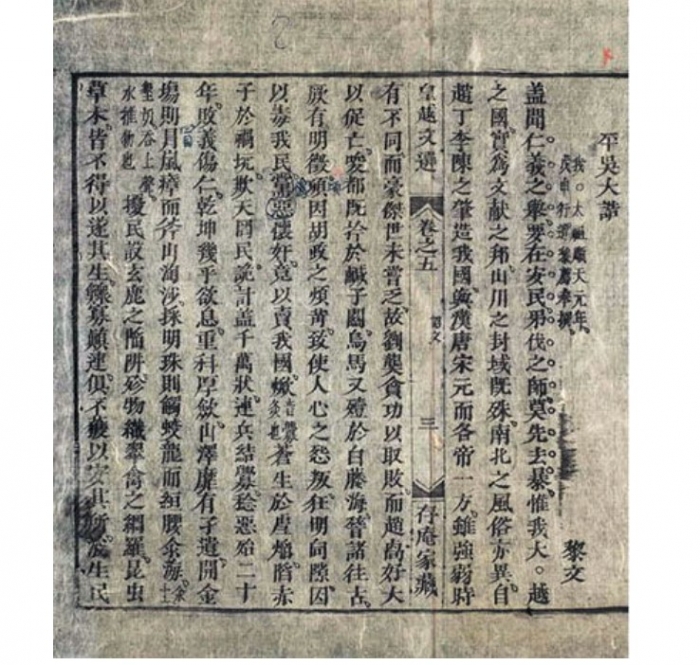
In terms of history: The Lam Sơn thực lục is a historical narrative documenting the ten-year Lam Sơn uprising, commissioned by King Lê Thái Tổ in 1432. The authorship of this work remains uncertain, although many assert that it was compiled by Nguyễn Trãi, yet this is mostly speculative. Vĩnh lăng thần đạo is an inscription he wrote at Vĩnh Lăng, the mausoleum of King Lê Thái Tổ, recounting the life and achievements of the king.
In geography: Dư địa chí by Nguyễn Trãi is the oldest surviving geographical work in Vietnam, documenting the products and peoples of the country in the 15th century.
In poetry: Ức trai thi tập is a collection of 105 poems in Classical Chinese, including the famous Côn Sơn ca; Quốc âm thi tập is a Nôm poetry collection containing 254 poems organized into four sections: Vô đề (192 poems), Thời lệnh môn (21 poems), Hoa mộc môn (34 poems), and Cầm thú môn (7 poems). This is the oldest surviving collection of Nôm poetry in Vietnam, positioning Nguyễn Trãi as a foundational figure in Vietnamese Nôm literature; Chí Linh sơn phú is a poem in Classical Chinese recounting the third retreat of the Lam Sơn troops to Chí Linh mountain in 1422; Băng Hồ di sự lục is a prose piece in Classical Chinese he authored in 1428, detailing the life of Trần Nguyên Đán.
